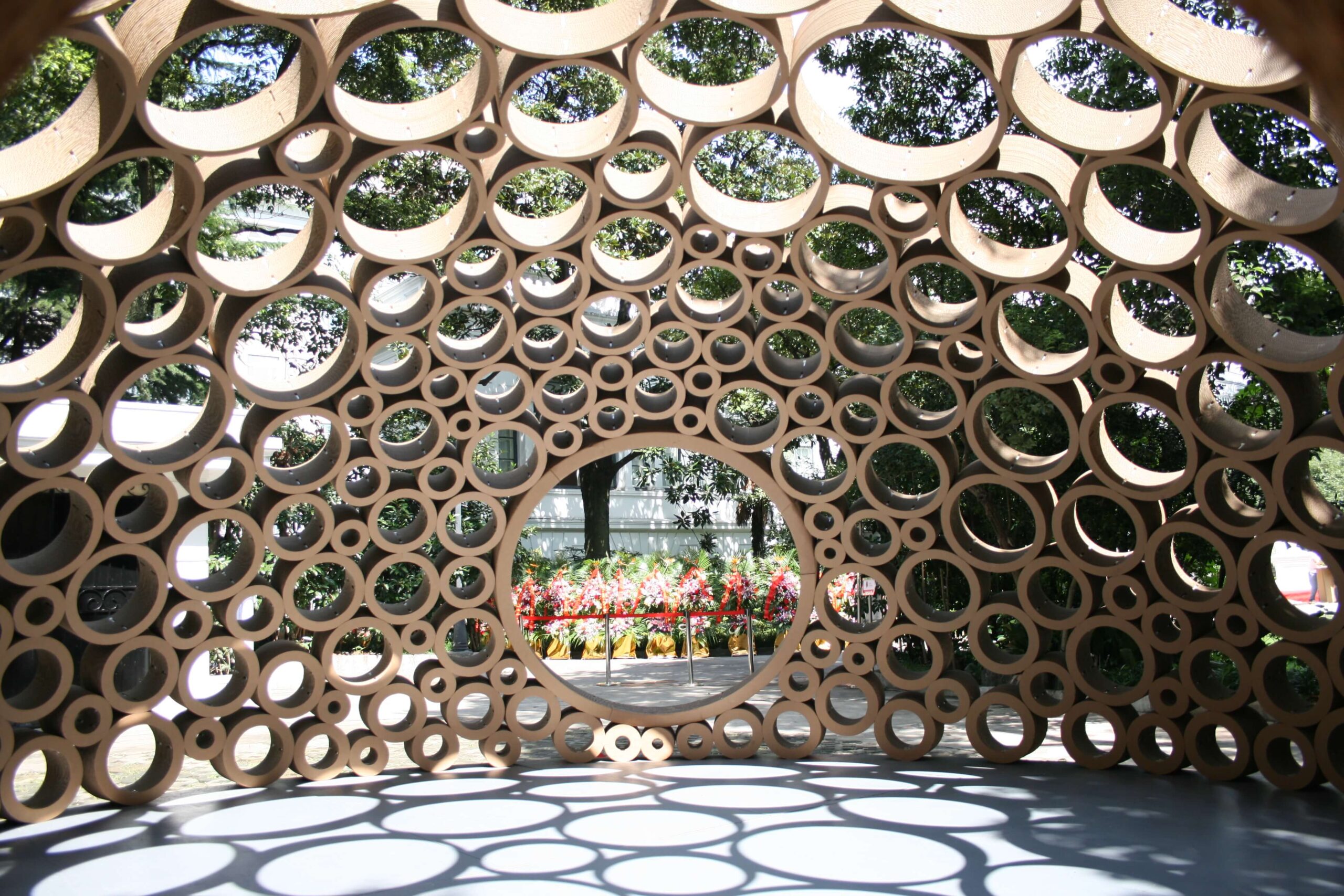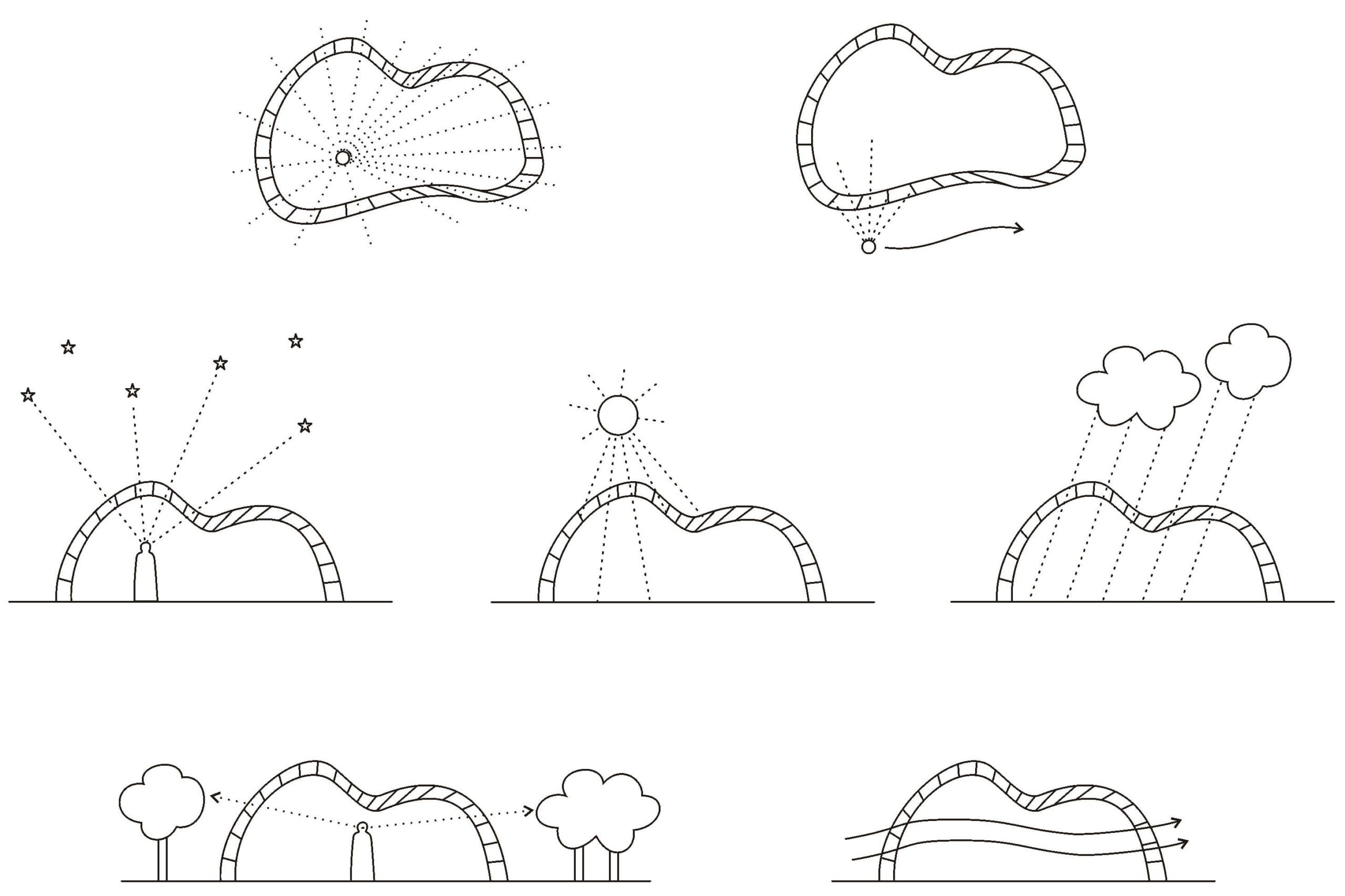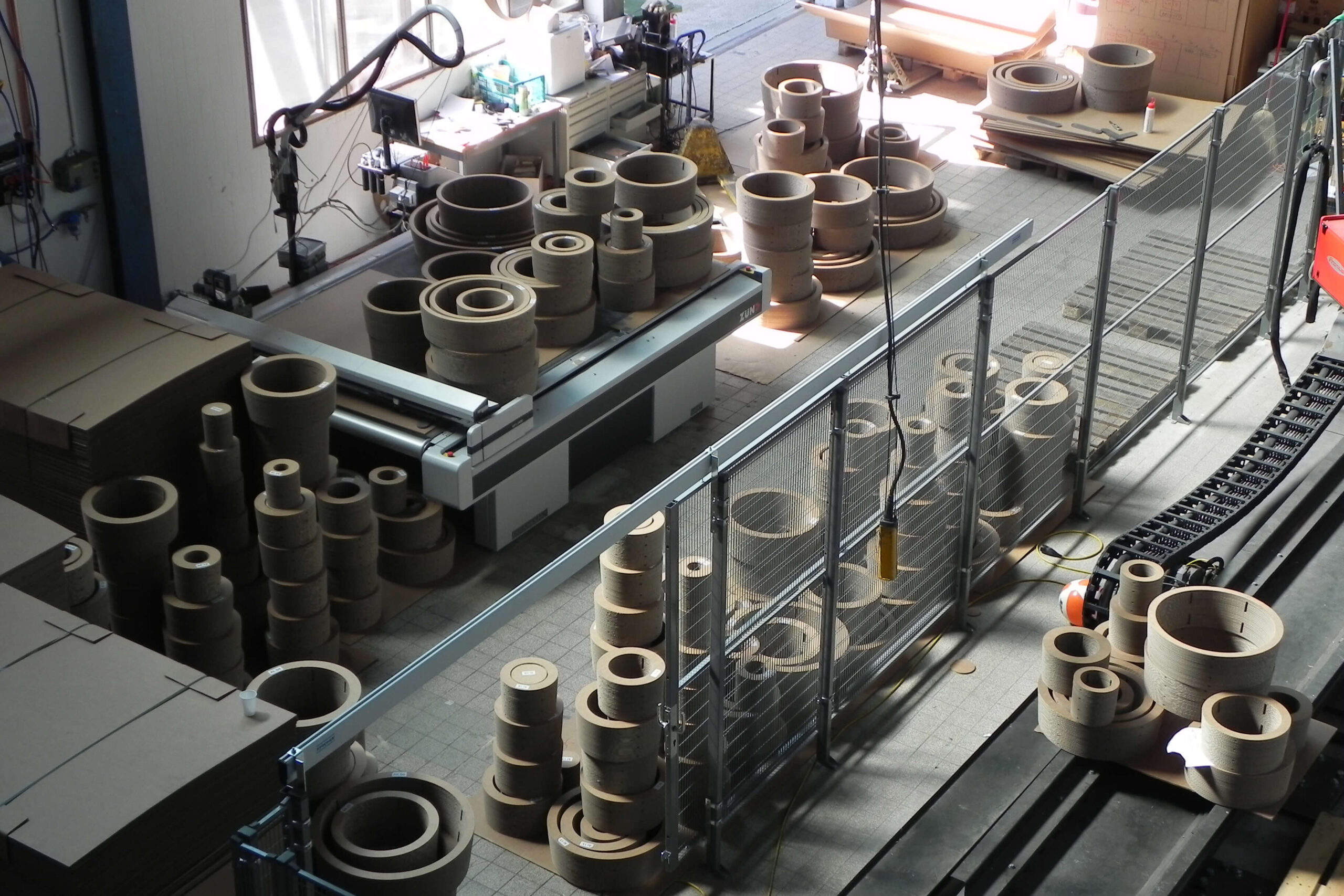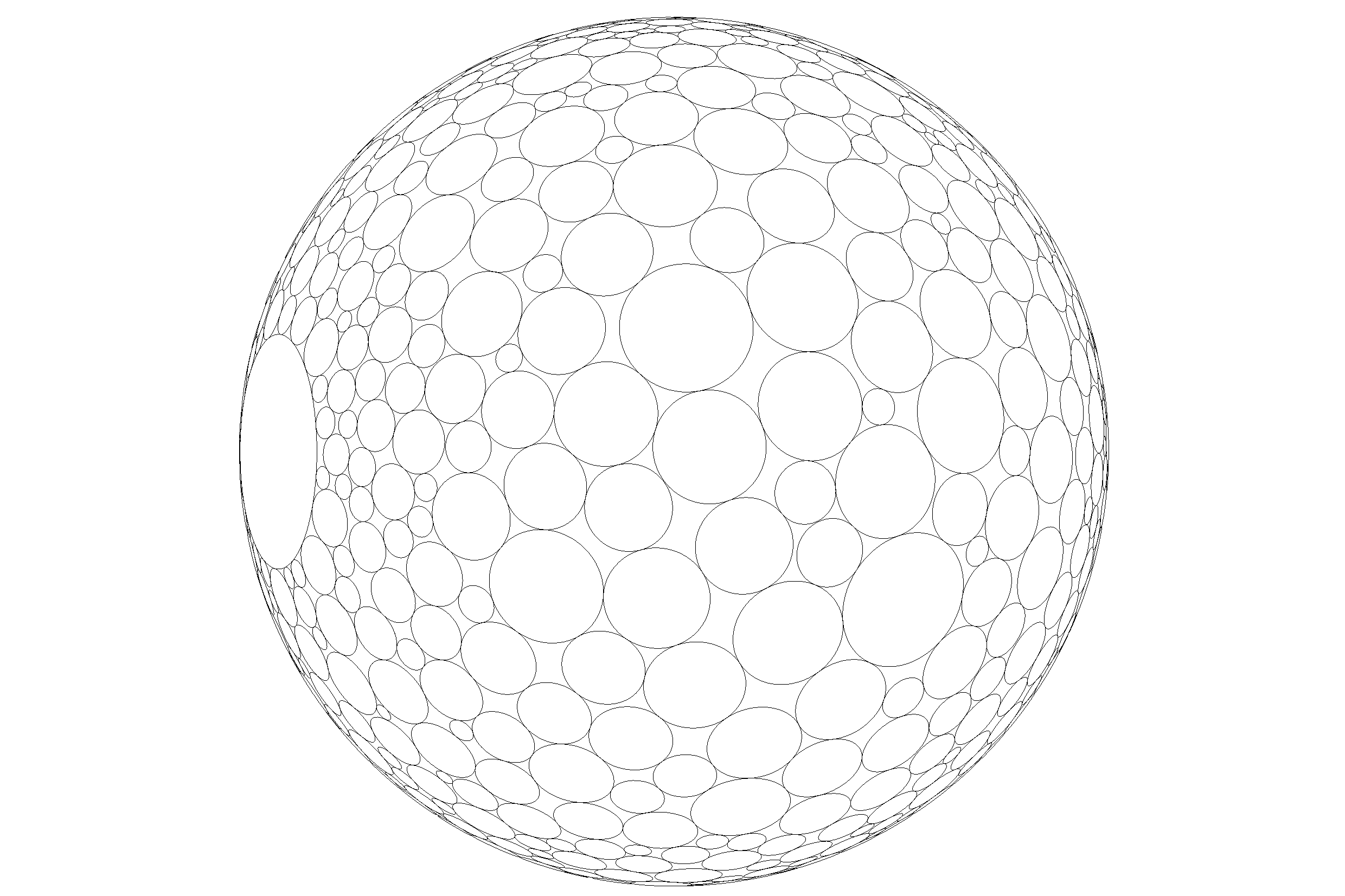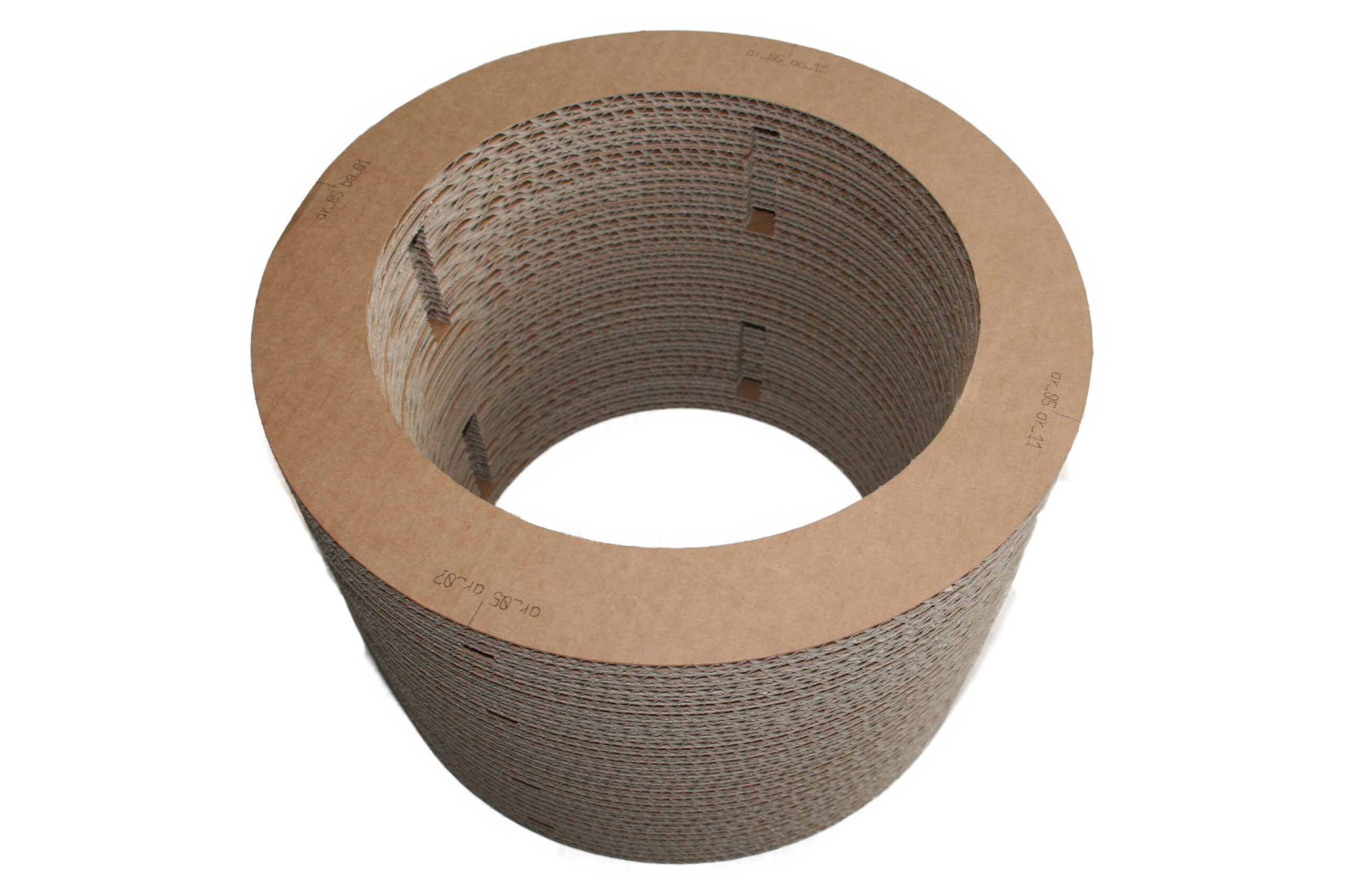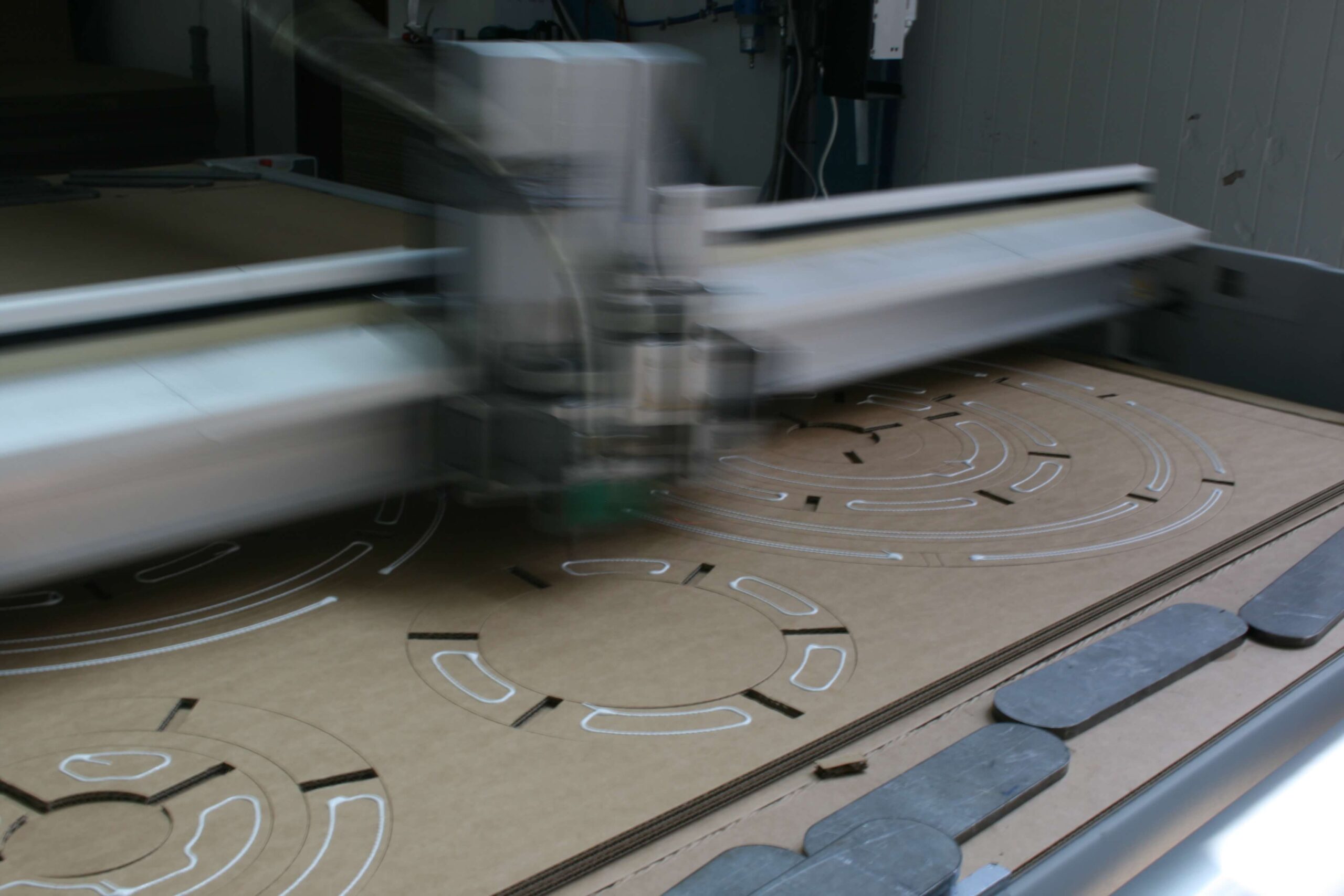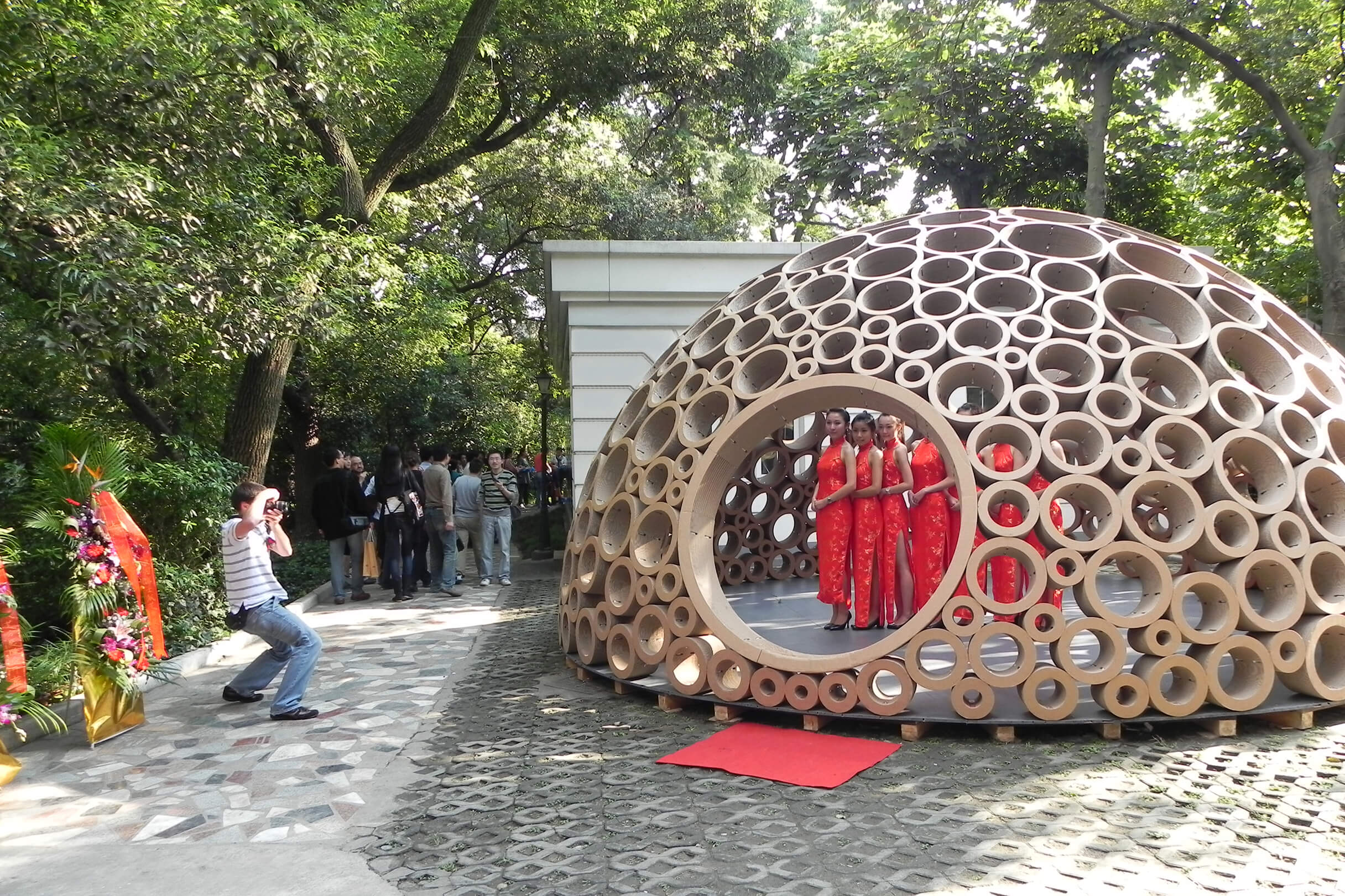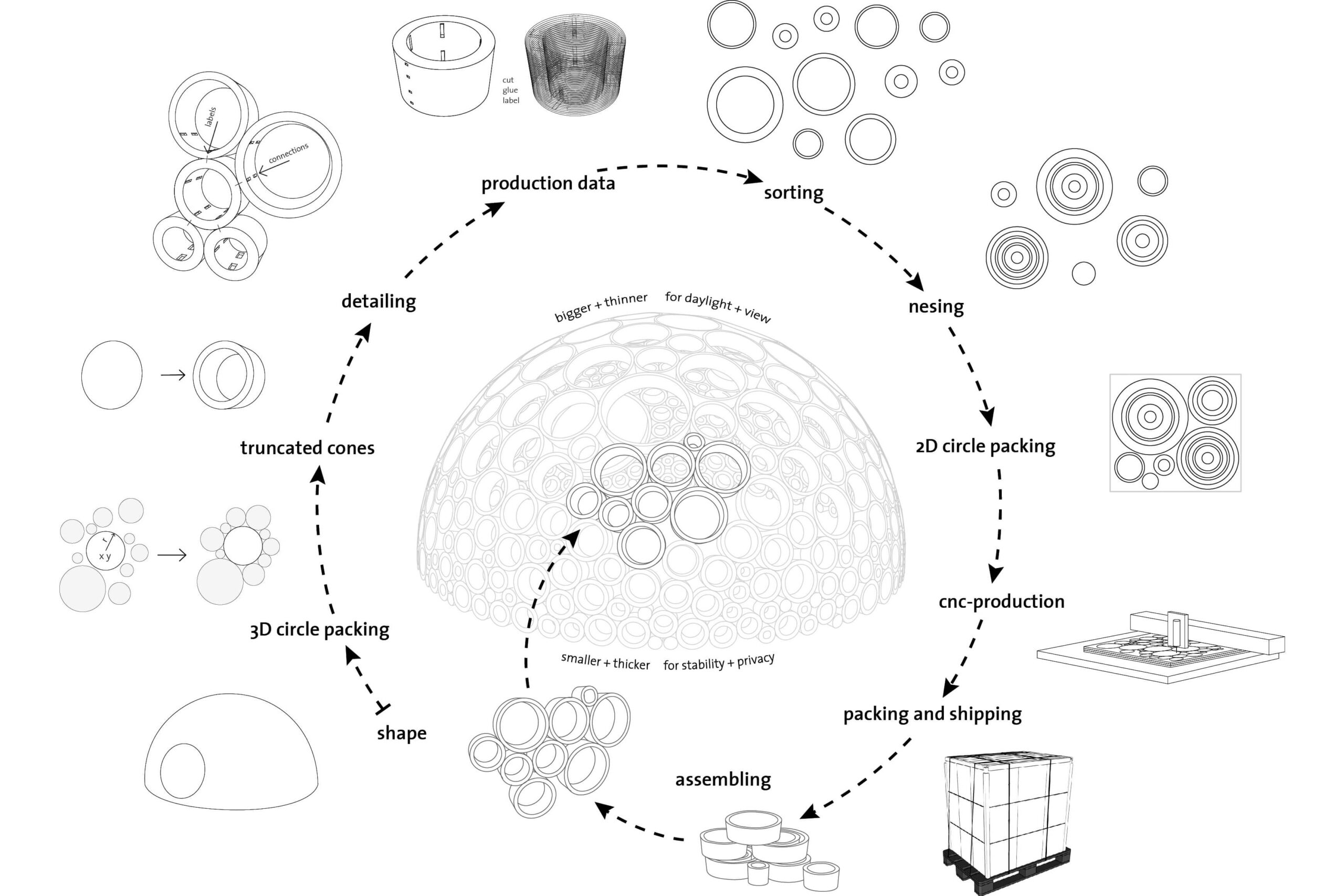Packed
A cardboard pavilion in Shanghai 上海
The Packed Pavilion was presented in a paper-art exhibition in Shanghai in conjunction with the closing of the World EXPO 2010. The project required the design of a cardboard structure that would have to be produced in Zürich, and then packaged, shipped, and assembled in Shanghai. After some experimentation with the use of cardboard, a constructive element with the shape of a truncated cone was chosen to compose the pavilion. Besides fulfilling design and structural requirements, the conic geometry was presenting interesting possibilities in terms of nesting (fitting into each other) and packing (disposing side-by-side) that would be essential in the project.
The authors then wrote a computer program that allowed the cones to combine with each other through a 3D circle packing process. The result of this combination was a network of circles that, according to tangency and density rules, were able to populate a surface by mutually negotiating their size and position. In this way, while maintaining their individual diversity and freedom, the cones were cooperating to achieve higher-level goals such as overall stability, shape, daylight, views, and spatial effects. Next, the 409 individual cones were prepared for production. Some parts were cut out from the cones in order to be able to connect them together using cable-binders, and these connections were labelled on the outer surface of each cone with the names of the adjacent cones to be connected.
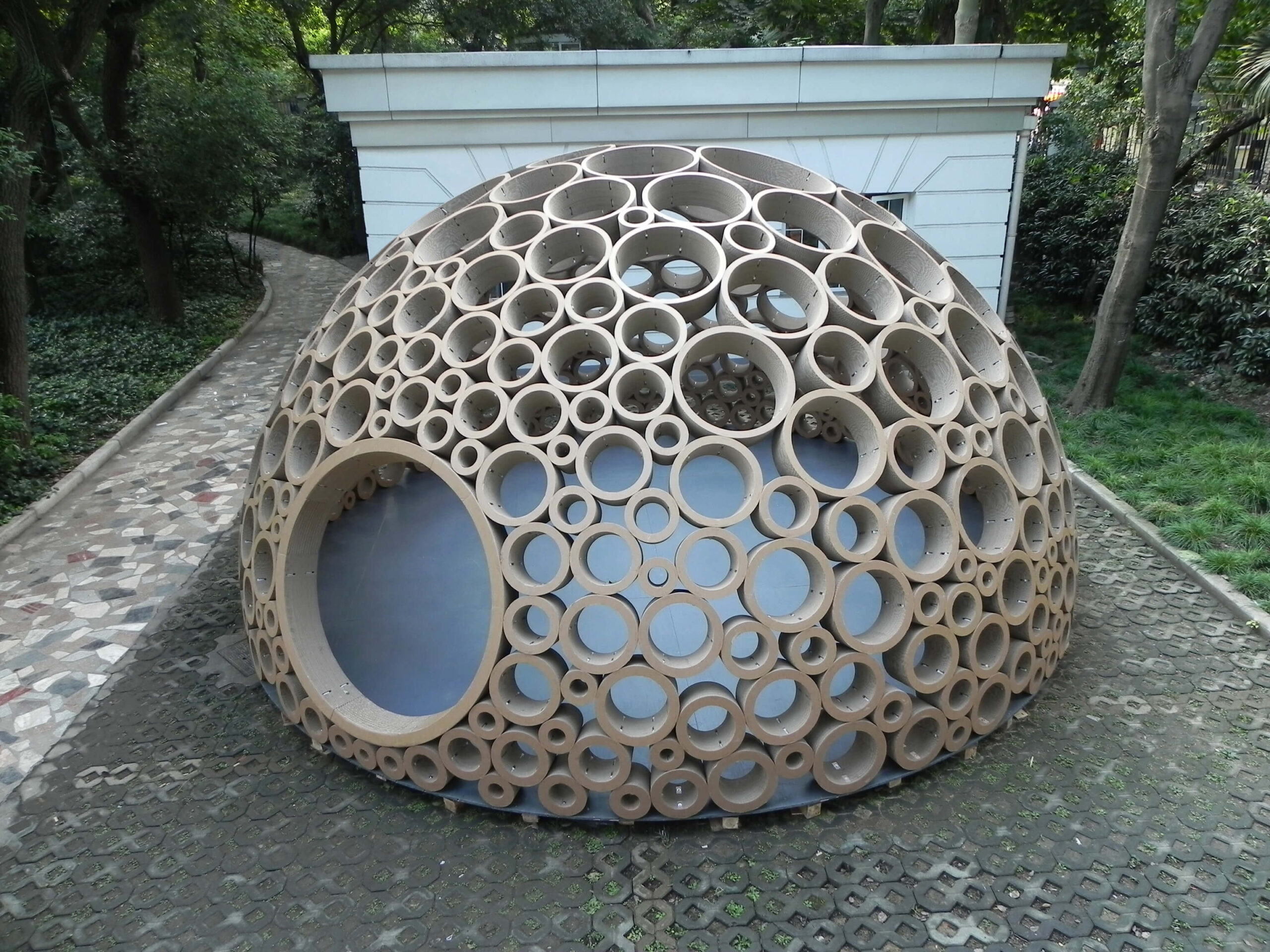
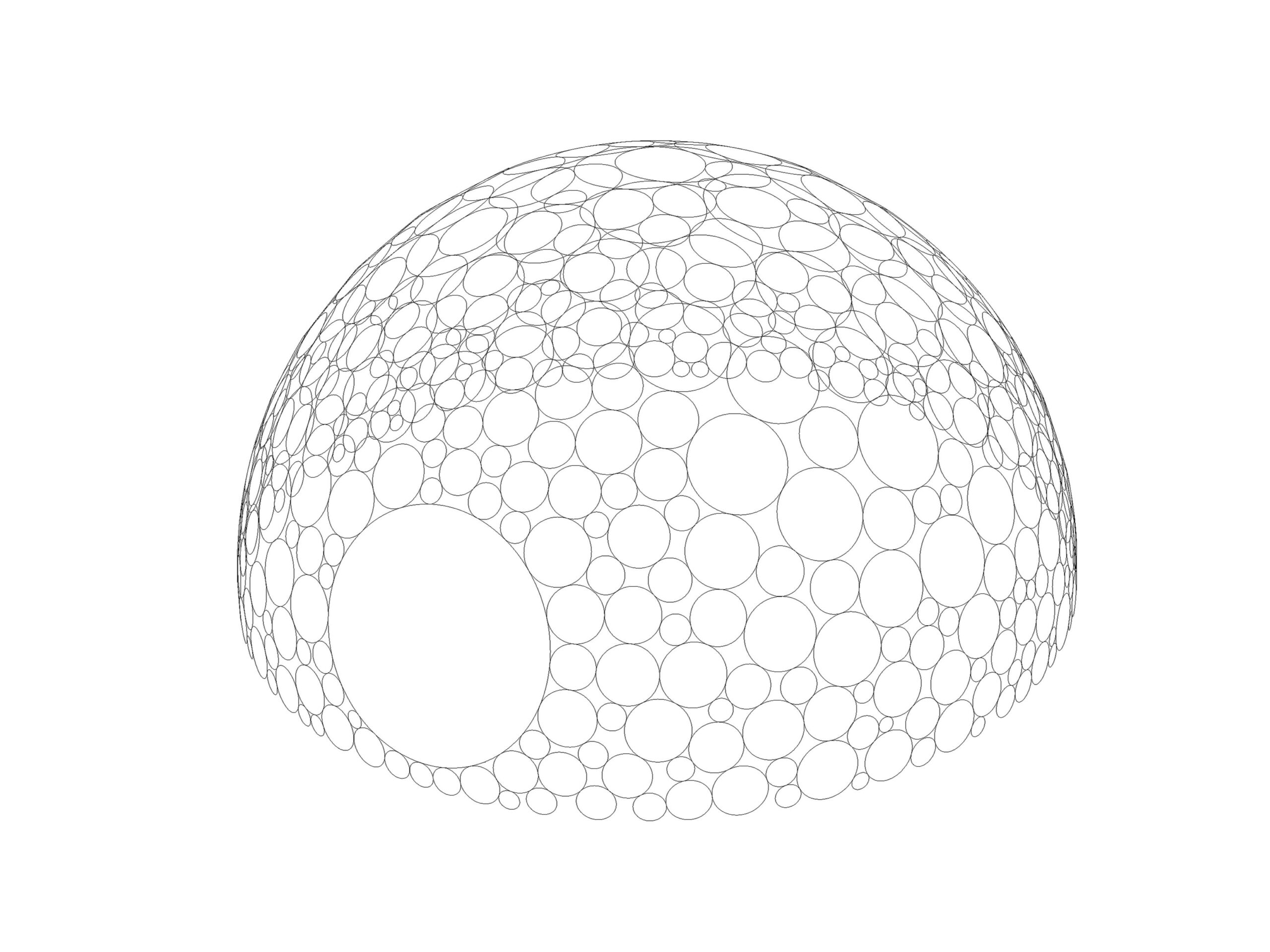
The labelling on the construction elements themselves extremely simplified the assembly process and prevented the need for any printed plan. Each cone, composed by 28 layers of corrugated cardboard, was cut, glued together, and labelled with a computer-controlled robotic machine. For every step -from design, digital fabrication and packaging in Zurich, to the shipping and assembly in Shanghai- the process was implemented by means of self-made computer programs. By intelligently nesting and packing the cones in the rectangular cardboard sheets and then again in the shipping boxes, the amount of material used, the production time, and the shipping volume were significantly reduced. This experiment was an early demonstration of how the use of programming techniques can allow to integrate design, manufacturing, construction, and logistical issues into coherent architectural concepts that explore new formal languages. The Packed Pavilion project was largely published and became a global reference of computational design.
Project and realization by M. Leidi, D. Zausinger, and M-C. Chen, with the contribution of J. Kuo and T. Pawlofsky.
Developed as part of ETH Zürich, Prof. L. Hovestadt, in 2010.
/. ///
Archimethod SA
+41 91 940 26 70

